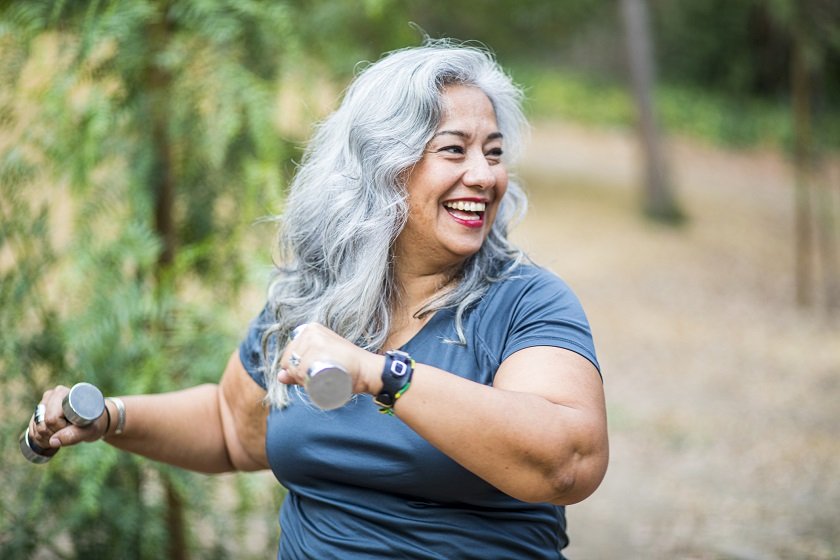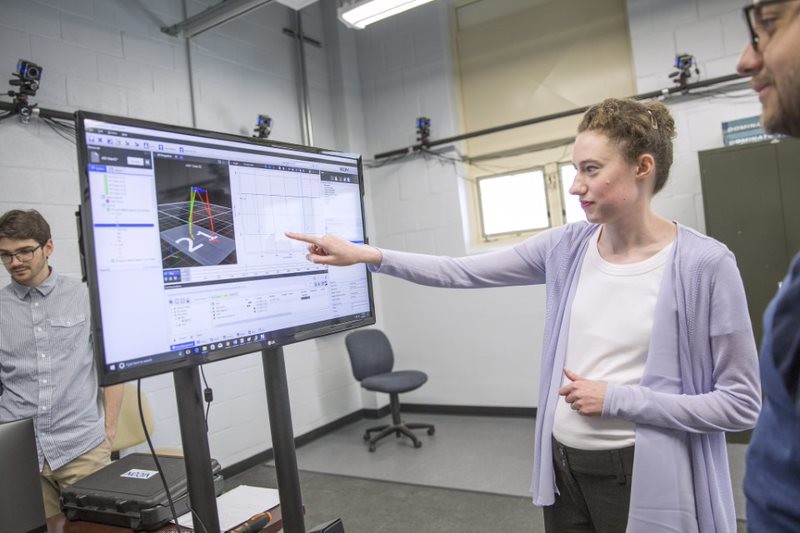Redlining from the 1930s, marked minority and low-income neighborhoods as “hazardous,” which influenced mortgage and insurance decisions. Results show that redlined areas have less greenspace and more pavement, intensifying urban heat. While higher temperatures generally decreased walking in “still desirable” or “best” neighborhoods, this effect was not significant in “definitely declining” or “hazardous” areas, possibly due to greater reliance on walking for essential activities. Findings underscore the lasting impact of discriminatory policies on environmental vulnerability and physical activity.
Tag: Walking
CDC Report on Walking for Leisure and Transportation: Expert Available
An expert from the Johns Hopkins Bloomberg School of Public Health is available for interviews around the new CDC report Walking for Leisure and Transportation Among Adults: United States, 2022, released today, July 31, 2024. Shima Hamidi, PhD, is a…

Walking to Remember
It’s commonly known that physical activity is good for your heart and maintaining a healthy weight. But did you know that it may also lower your risk of dementia? Physical activity has an important impact on brain health, says Manisha…

Americans walk less frequently and less safely compared to other countries
A stroll through international statistics about walking reveals the grim reality of foot travel in the United States. “People walk less in the United States because it’s more dangerous to walk here and walking conditions are worse compared to other countries,” said Ralph Buehler, professor of urban affairs and planning at Virginia Tech.
Five Key Factors Affect Physical Activity in Multi-ethnic Older Adults
A study is the first to use a large range of instruments/ tools and include older adults from many ethnic groups to determine factors affecting their physical activity. Results showed that age, education, social network, pain and depression accounted for a statistically significant proportion of unique variance in physical activity in this diverse older population living independently. Those who reported lower physical activity tended to be older, have less years of education and reported lower social engagement, networking, resilience, mental health, self-health rating, and higher levels of depression, anxiety, pain, and body mass index compared to the moderate to high physical activity groups.
CDC grant spurs research for fall prevention
With a $1 million grant from the CDC, ISU researchers and community partners will be the first to directly evaluate a walking program’s potential for reducing the risk and incidence of falling, which is the leading cause of injuries among people ages 65 and older in the U.S.
Study First to Explore ‘Walking’ Sharks on the Move in Early Life Stages
A newly-discovered walking shark that breaks all of the rules for survival is the focus of a first-of-its-kind study that examined differences in walking and swimming in neonate (newly-hatched) and juvenile walking sharks. Despite dissimilarities in body shapes – neonates have bulging bellies and juveniles are slender – the three aquatic gaits they use (slow-to-medium walking, fast-walking and swimming) did not differ. Kinematics between neonate and juvenile epaulette sharks did not alter during development.
A New Framework for Investigating Stability During Walking
By creating a new framework for using mechanical energetics as a measurement for stability, Georgia Tech researchers have gained deeper insights into how and why we fall.
Surroundings affect rhythm of an individual’s walk, according to new study
Stepping patterns become slower and more variable if a person is uncomfortable with their surroundings, researchers have found.
The MedWalk diet: a step closer to walking away from dementia
It’s been named the world’s best diet for weight loss, but now researchers at the University of South Australia are confident that the Mediterranean Diet – combined with a daily bout of exercise – can also stave off dementia, slowing the decline in brain function that is commonly associated with older age.
Greening the Earth and Improving Health through Human-Powered Transport
Driving has become a way of life for people throughout the world. However, heavy reliance on gas-powered vehicles contributes to three problems (global climate change, air pollution and physical inactivity) that result in millions of deaths per year. As developing…
Walking pace among cancer survivors may be important for survival
A new study from Washington University School of Medicine in St. Louis and the National Cancer Institute finds a possible link between slow walking pace and an increased risk of death among cancer survivors. The researchers say more work is needed to see if physical activity programs or other interventions could help cancer survivors improve their ability to walk and perhaps increase survival after a cancer diagnosis.
Moderate-pace Walking Shrunk Pancreatic Cancer Tumors and Increased Cancer-killing Cells, Small Study Shows
Emily LaVoy, PhD, of the University of Houston, and colleagues explored the effects of moderate-intensity exercise on a mouse model of pancreatic cancer. Pancreatic cancer can be a particularly dangerous form of cancer because it is often diagnosed in later stages and spreads quickly. Though the trial sample was small—thus warranting further study—the results were optimistic.
Rutgers Expert Available to Discuss Stress Reduction Benefits of Exercise and Being Outdoors Following Election
New Brunswick, N.J. (Nov. 6, 2020) – Rutgers University–New Brunswick Professor Brandon L. Alderman is available for interviews on how being outdoors and exercise can reduce stress following the 2020 election and during the COVID-19 pandemic. “Time spent outdoors and…

Prevent Severe COVID Symptoms With Lifestyle Changes
Obesity is contributing to worse outcomes in people with COVID-19. Dr. Naomi Parrella, medical director of the Rush Center for Weight Loss and Bariatric Surgery, explains how managing your weight can lower your risk for severe COVID symptoms and help you prevent other chronic diseases.
Spinal Cord Contributes to Post-injury Walking Recovery in Cats
Article title: Recovery of locomotion in cats after severe contusion of the low thoracic spinal cord Authors: Hugo Delivet-Mongrain, Melvin Dea, Jean-Pierre Gossard, Serge Rossignol From the authors: “The main findings of this study show that after a very large damage following…

Vitamin D Boosts Chances of Walking After Hip Fracture
Senior citizens who are not vitamin D deficient have a better chance of walking after hip fracture surgery, according to a Rutgers-led study. The findings in The American Journal of Clinical Nutrition suggest that vitamin D deficiency could limit mobility in older adults, said senior author Sue Shapses, a professor in the Department of Nutritional Sciences at the School of Environmental and Biological Sciences at Rutgers University–New Brunswick.

CAREER award to help researcher understand, optimize walking for stroke patients
To design better assistive exoskeletons, a wearable device that helps those with disabilities walk, researchers need to further understand the complexities of walking. The National Science Foundation recently awarded Anne Martin, assistant professor of mechanical engineering at Penn State, a $500,000 Faculty Early Career Development (CAREER) grant to study how both healthy and post-stroke individuals walk.

“Magic” Health Numbers: Physicians Analyze New Research and Offer Advice
Three primary care physicians from Western Connecticut Medical Group (WCMG) analyzed new research about several widely known “magic” health numbers and shared their health and wellness recommendations.